The question of whether or not Asheville would support a theater—or a part of a theater—devoted to showing older movies—by which I mean movies not currently in release—has come up several times in discussions I’ve had with local theater managers. It’s a question to which there is no easy answer, though input from moviegoing readers might offer some clues in the matter.

For those of you not old enough to remember the pre-video days, rep houses and university showings were once the only way to see many movies that weren’t in current circulation. These theaters sometimes played a major role in sparking interest in filmmakers who were not generally known or who had been long forgotten. The long-gone Bleecker Street Cinema in New York City, for example, was instrumental in bringing Alfred Hitchcock’s British films to public consciousness, proving that there was more to early Hitch than just The 39 Steps (1935) and The Lady Vanishes (1938). A traveling tribute to Rouben Mamoulian—consisting of four of his movies—made the virtually forgotten filmmaker a household name among cineastes in the early 1970s.
The list could go on and on of what rep house theaters and universities accomplished. That these venues were all but killed—there are still a few—by home video is undeniable. The question is whether such would be viable, especially in the age of home theater.
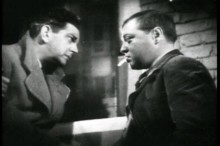
The argument, of course, is that no one is—or certainly few are—going to come out to see a movie that they can buy or rent and watch in the comfort of their own home, especially if their own home includes a large-screen TV and 5.1 channel sound. (Of course, 5.1 channel sound benefits you very little if you’re watching, say, Casablanca.) It’s a pretty solid argument, too, but it’s not the whole story.
Were there absolutely no market for this, then neither the World Cinema showings, the Hendersonville Film Society, nor the occasional library screenings exist. Granted, these are worked on a donation or even free basis, but they do draw audiences of varying sizes. That proves that there’s still some interest in seeing movies in something at least approaching a theatrical manner—seeing them as a group experience that extends beyond half a dozen people in your living room.
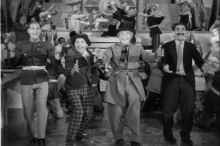
A friend of mine who lives in Toronto recently attended some of the showings of movies held by that city’s Jewish Film Festival. Two of the films he saw—the Four Marx Brothers in Duck Soup (1933) and Astaire and Rogers in Swing Time (1936)—are most certainly easily available on DVD and have been for some considerable time. Did people turn out for them? Based on what I’ve been told, yes, they did. Duck Soup mayn’t have packed a 400 seat theater, but even at three-quarter capacity, that makes a statement about the possible practicality of such a screening. According to my friend, Swing Time didn’t fare quite as well, but still drew a respectable crowd. It’s worth noting perhaps that the Marx Brothers have more of a cult following and that their Jewishness is more to the point at such a festival than that of composer Jerome Kern as concerns Swing Time.
Two things immediately leap out at you if you think about this, of course. First of all, Toronto is much larger than Asheville. But more important than that is the consideration—one that comes into play with our local film groups—that drawing a crowd for one showing of Duck Soup or Swing Time is considerably different than what you could expect if either of those movies played for a week or more. That’s a very real consideration. It is perhaps not an insurmountable one.
Consider this as a prospect. Instead of booking a film for a solid week, what if the old model of changing the bill twice a week was adopted? That’s imperfect, of course, because your Sunday-Wednesday fare isn’t getting the full weekend break of your Thursday-Saturday movies. Of course, the approach worked for theaters right up through the mid-1960s at least, and it could be effectively monkeyed about so that all the films could get some weekend play.
The thing about this is that, no, you’re not going to fill a theater with this sort of thing, but what about a well-designed, intelligently thought-out screening room with more limited seating? With technology what it is, that’s not overwhelming as a concept. With the amazing advances in DVD projection these days, it wouldn’t even require film—just first-class equipment. From a practical standpoint, this reduces the not inconsiderable shipping charges for 40-50 pounds of 35mm print.
From an aesthetic standpoint, something else is gained—selection. The problem—especially in our post-16mm era—of availability has long stymied this kind of programming. Back in the glory days of rep houses and university screenings, it wasn’t that hard to come by a pretty impressive array of titles. At that time, there were companies—or branches of distributors—that specialized in providing 16mm prints for this purpose. That’s pretty much gone by the wayside. And if you can locate a good 35mm copy today, chances are it’s going to be what’s called an archival print. Those come with the problem that they can only be shown from reels. They can’t be spliced together onto a platter as a continuous film and require a two projector set-up (which no one has locally) and a projectionist who knows how to effect a smooth changeover from projector to projector every 15-20 minutes. In all honesty, I’m the only person I know who has ever done that—and that was 35 years ago.

With DVD projection—which will one day be replaced by plain digital projection—new possibilities open up. The selection—while far from endless—has become much broader. And while the quality isn’t on a par with 35mm or actual digital (where the file size for a movie tends to be between 125 and 250 gigabytes), it’s surprisingly good—presupposing a well-authored disc and good equipment. Quite frankly, if it’s done right, it looks better than what we saw in 16mm 30-odd years ago. Plus, the sound is better and the prints are in better condition.
From a purely technical standpoint, there’s no reason why such a concept wouldn’t work—and work nicely. From an aesthetic standpoint, there’s much to be gained from the approach. You may, for example, think you’ve seen Duck Soup because you saw it on TV or you rented or even bought the DVD. Fine. But you really haven’t seen it unless you’ve seen it with an appreciate audience—the way it was meant to be seen. That’s particularly true of comedies, but it holds true with heavier fare, too. Never sell audience vibe short. There’s much to be said for the concept of the shared experience. And there’s the whole size consideration. While a screening room screen isn’t going to be full theater size, it’s still going to give a closer approximation of the theatrical experience than 99 percent of any home theaters. Trust me, when Marlene Dietrich and her troops charge up the steps inside the Russian palace in The Scarlet Empress (1934), it takes size to fully appreciate the loopiness of the spectacle.
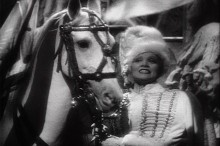
Technical considerations to one said, the biggest component in this is, I believe, that of creative programming. While there’s something to be said for merely running whatever might appeal—and guessing what might appeal—the more viable approach from what I’ve seen work elsewhere lies in doing films in some kind of series approach. There are many reasons why this is likely to work better, not the least of which is that audiences build over a time. The viewer who takes a chance on a film in a Hitchcock series and likes what he or she sees is likely come back for another shot of Hitch—and bring friends. I’ve watched library series expand in exactly this manner.
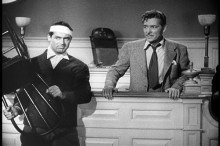
In its simplest form, a series can be a collection built around a director or a star, but it can be much more than that and offer another kind of a draw. Movies can be tied together by theme or era, for example. With so much attention being paid to pre-code movies these days—MGM has brought out two or three sets, Universal just brought out one—that seems like a natural, especially when you realize that there are more pre-code movies out there that haven’t been marketed as pre-code. For example, A. Edward Sutherland’s International House (1933) with W.C. Fields has been out for a long time as part of a Fields collection, but it’s far racier than a number of the movies being promoted on their pre-code basis.
There’s also the possibility of a seasonal approach in some cases. Christmas movies are an obvious—albeit rather trite—choice, but this could go further. I was surprised last year when Matt Mittan (who loves to surprise me) started asking about suitable movies for the Fourth of July. I cringed when I started envisioning the worst of flag-waving movies, but then found that his callers had suggested such interesting titles as Hitchcock’s Foreign Correspondent (1940) and George Stevens’ The Talk of the Town (1942)—films that actually address the issue of freedom. I could get behind a double-bill like that any July 4.
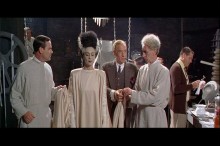
Let’s go a step further and examine something that was posted in Weekly Reeler only this morning concerning the prospect of intelligently paired films. This opens an entirely different area of exploration. How much richer might the experience be if one were to pair James Whale’s Bride of Frankenstein (1935) with Bill Condon’s speculative biopic on Whale, Gods and Monsters (1999)? Or what about F.W. Murnau’s Nosferatu (1922) with E. Elias Merhige’s fantasticated film about the supposed making of Nosferatu, Shadow of the Vampire (2000)? Then there’s the possibility of teaming Bertolucci’s The Dreamers (2004) with films that are referenced in it like Josef von Sternberg’s Blonde Venus (1932) or Rouben Mamoulian’s Queen Christina (1933). And this could go on—these are matches that I’m only tosssing out as they occur to me.
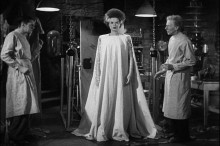
My point is that I think all these things—or some variations on them—that could and probably should be done. I bring them up now because such an idea—or something like it—is actually being kicked around as we speak. I’m not at liberty to say much about it at this time apart from that. But the fact of it as a very real possibility makes the rep house—or rep screening room—something worth thinking about on a more than “wouldn’t it be cool if” basis. The question for readers is whether or not they’d really support such an undertaking. Would you?




I guess a way to start would be to find the smallest town that has a rep theater with no university funding. If there’s one that’s close to the size of Asheville find out how they do it.
I for one would really like to see something like this pulled off. I lived for many years in Norfolk, VA, a block from an art repertory theatre called the Naro (‘be Naro-minded’ was their slogan). They would feature such thematic couplings. For example, they would periodically show silent films with live orchestral music. Afterwards, there would develop a discussion group (usually well attended) at a nearby bistro that would often go into the wee hours.
I think this idea could be well-received here.
How long ago was this?
“How long ago was this?”
Up until I moved from there, which was 2001. The theater is still there, unchanged. I visited some friends there about 2 years ago and no change (except they added a video rental store beside the theater with obscure titles unavailable elsewhere).
Hanke… Someone needs to buy the old twin theatre behind Office Max on Tunnel Road! one of the screens is concave! Great old “run down” theatre!
I guess a way to start would be to find the smallest town that has a rep theater with no university funding. If there’s one that’s close to the size of Asheville find out how they do it.
I doubt there’s actually a flat out model. The biggest catch to such an enterprise is its being taken on by someone who can and will go for it for the long-haul. It has to be someone willing to experiment and willing to stick it out and work toward building an audience. (I watched someone try something like this once and when it hadn’t worked after three or four weeks, they gave up.)
But really, I’m not so much asking whether someone should open such a venue, I’m asking if you would go to it were it available to you?
Someone needs to buy the old twin theatre behind Office Max on Tunnel Road! one of the screens is concave! Great old “run down” theatre!
I’m guessing you mean the old Innsbruck? I hear that one mentioned as a possibility every so often. The theater’s before my time here, but I have a suspicion that it’s of the shoebox design — a narrow auditorium with the aisle in the middle. That might be surmountable in the rebuilding/refurbishing, but I’m not sure the location’s exactly desirable — or what condition it’s in. In any case, it’s probably a little grander of an undertaking than I was talking about.
Ken… I couldn’t help but throw that out there even though it’s a little out of context!
From what I remember of it… One of the two theatre’s was considerably large and not square shaped but more circular and the screen was very large and bending inward… This was my favorite theatre back in the day. It had an old elegance about it and the seats were very nice and cushend.
I think it closed around 1998… Thanks Ken for all your film contributions!
Id go.
I’d love it if Asheville had a classic movie house. And I would patronize it. I lived in a city once that had one. I went and saw several good old movies. I know you can see these on AMC and TCM, but there is nothing like the big screen with a room full of others enjoying a movie together. Ken, one thumb up from me! Two, if you count my dog’s paw up.
From what I remember the Innsbruck had one very large auditorium that sort of fanned out… It was larger at the back of the room than at the front… Probably the largest single theatre in Asheville still… In the larger room the screen bent inward slightly… The other theatre was smaller and pretty normal. That theatre was a little nicer than the Merrimon twin back in the day.
i’ve been wishing for a while that rastabilities on haywood road would turn into a brew & view or theater of some sort. wasn’t it once something of the sort, or am i making that up?
I think it closed around 1998… Thanks Ken for all your film contributions!
That would fit what I’ve been told. And you’re welcome for anything I’ve done.
Your description of the Innsbruck makes it sound rather more appealing than I’ve imagined. Of course, the chances of anyone tackling the project on that scale is probably too much to hope for. That’d require someone with an almost philanthropic interest in movies and very deep pockets. Finding either one might be easy. Finding the two combined in a single person is another matter.
wasn’t it once something of the sort, or am i making that up?
It was, I believe, called the Isis (a pretty cool and exotic theater name) and was a movie theater. (Marc could probably enlighten us a little about its history.) If you look at the building from the outside, it’s fairly obvious as to its origins. Now…as to what’s been done to it in the intervening years…well, that might be the kicker. It is, however, I believe the only old movie house standing hereabouts other than the Fine Arts.
I don’t currently live in Asheville, but own a house there and am planning to move in the next few years. If Asheville doesn’t currently have one, it seems to me the population there would definitely enjoy and support an art-house and vintage movie theater. I think the trick is variety and short runs. I live down the street from the Castro Theater (www.castrotheatre.com) in SF, CA. Check out their program list now and again for ideas… they usually have a movie for one or two nights. That’s is just enough time to get everyone who wants to see the film into the theater. Also, they have a healthy variety of old and new films, and are host to many film fests. Sorry for rambling… but I would love, love, LOVE to have something like this there when I move! Thanks!
I used to go to the Red Vic all the time when I lived in SF. They always had such a great variety.
If Asheville doesn’t currently have one, it seems to me the population there would definitely enjoy and support an art-house and vintage movie theater.
Well, we do have an art house — the Fine Arts Theatre — and it does a splendid job in the area of current art and other non-mainstream movies, but vintage movies are another animal.
I think that a good way to gauge interest in a rep house would be to ask the owners of Courtyard Gallery how successful their series of classic movies is. I agree with a previous comment that frequent changes (1-3 days max) would be best. CG shows a movie only once and on a weekend night. While I’m sure that not every movie they show has a large audience, still, if _most_ of the movies have a good-sized audience, that might be a good clue.
I would support such a venue. I fondly remember the rep house I enjoyed while living in Atlanta in the 70’s and 80’s; there’s nothing comparable to watching Gable and Colbert in glorious BW on a big screen with fellow movie lovers.
Carlos (Courtyard Gallery) gets a pretty solid turnout from what he tells me. (Though I often make suggestions — and occasionally provide films — I’ve never actually been to one of the screenings, mostly because Friday night usually finds me reviewing a new movie.) Its success makes me hopefully, but drawing, say, 40-50 people once a week for a movie that costs a donation is more suggestive than conclusive.
John C is remembering the Mall theater, which is long gone to additions on the Asheville Mall. The Theater behind Office Depot opened in 1966 as the Terrace theater. It was originally a one screen rectangular shaped room and was later “twinned” with very long shoebox auditoriums with a capacity of about 125 seats each. Very flat sound screens with no movable masking. I opened the first art theater in Asheville there in 1992 it was called the Innsbruck Cinema Plus, it was also the first theater in Asheville to serve beer and wine. The art market in town at the time just wouldn’t support a theater of this type, I sold my interest and it later went to a dollar house, and eventual closure. The building is shot, neglected by the owners of the Innsbruck Mall for many years now, it would be much cheaper to build a new theater. The Mall Theater was indeed a grand building with a seating capacity of 750 or so.
Geez… Your right!
My mistake…
Thanks for the correction!
The building is shot, neglected by the owners of the Innsbruck Mall for many years now, it would be much cheaper to build a new theater.
That, unfortunately, is what I suspected.
I would definitely go! I don’t know if I’d go to see Duck Soup or Swing Time, but I *couldn’t* pass up the chance to see The Godfather, Apocalypse Now, Goodfellas, Pan’s Labyrinth, Raging Bull… the list could go on and on… on the Big Screen! There’s just nothing like seeing a movie on the Big Screen. I (rather obsessively) frequented our university theater in Athens, GA, where the movies were selected by the theater club… such a treat!!
I would definitely go! I don’t know if I’d go to see Duck Soup or Swing Time, but I *couldn’t* pass up the chance to see The Godfather, Apocalypse Now, Goodfellas, Pan’s Labyrinth, Raging Bull… the list could go on and on… on the Big Screen!
This raises the question of programming, which causes me to ask what the reservations about Duck Soup and Swing Time are? I ask not because I personally prefer them to just about everything on your list, but because I’m genuinely curious as to whether it’s that you’ve seen them too often, that you simply don’t like them, or that you simply have no interest in movies that old?
This raises the question of programming, which causes me to ask what the reservations about Duck Soup and Swing Time are?
Personal preference, probably some generational issues with pace of the film as well – Hitchcock is about as old as I like to get. WOW! Hitchcock on the big screen!! Hadn’t thought of that one. I think mostly I’m just lost in the fantasy of a theater that plays all my favorite movies…
Personal preference, probably some generational issues with pace of the film as well – Hitchcock is about as old as I like to get.
Well, Hitchcock goes back to 1926, but I’m assuming you mean the 1950s films like Rear Window and Vertigo, though if pace is an issue, I can think of few things that move as slowly as Vertigo.
I think mostly I’m just lost in the fantasy of a theater that plays all my favorite movies…
That’s understandable — and it’s also what makes a venue like this difficult or possibly impossible to keep going. Unless there’s a viewership that will support a wide array of movies and take a chance on things they don’t know — might not even think they’d like — such a theater won’t survive for very long.
You have a great gage block website. Keep up the good work.